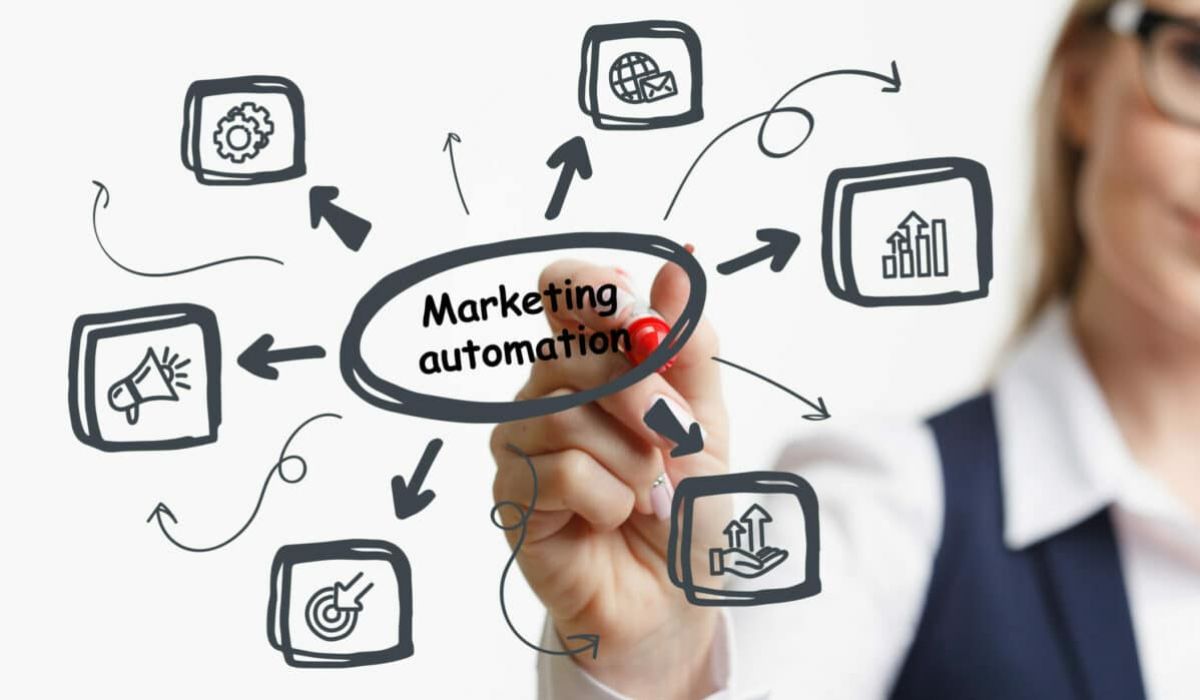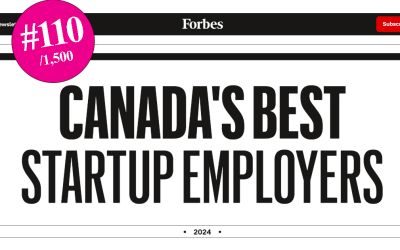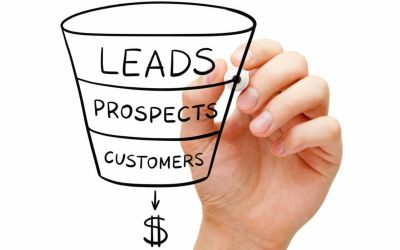B2B marketing automation: Strategies to drive more sales

Undoubtedly, creating a successful B2B marketing automation strategy requires time and effort. But once it’s up and running it can greatly impact mid and small-sized businesses by doing the serious heavy lifting for their sales funnel.
According to B2B Marketing official stats, 51% of companies already use automation to improve their marketing techniques. Additionally, 58% of companies are likely to follow the same practice in the near future. If you’re wondering how to utilize the power of marketing automation for b2b, then you’ve come to the right place.
Whether you want to upgrade your current strategy or you’re trying to create an automation strategy for the first time, this article will allow you to learn five different B2B marketing automation strategies to maximize your sales.
What is b2b marketing automation?
Before getting into further details, let’s first discuss what automation of marketing in B2B is and how it actually works.
In the simplest words, B2B marketing automation is the process of simplifying (automating) repetitive tasks of your organization. It uses several online channels and improves the efficiency of your overall marketing efforts.
You’ll need to use the right combination of tools and software services to effectively automate your B2B marketing strategy. However, you must determine your goals as well as the actual benefits you can get before automating your company’s marketing processes.
According to the recent stats, the following are some of the most critical strategic goals that a B2B marketing automation strategy can bring to the table.
On the other hand, the recent 2021 stats show that according to 92% of the users, improving the pipeline of their qualified leads is the primary goal of their B2B automation. Additionally, it’s followed by 66% of lead nurturing and 81% of customer retention.
How can b2b marketers use marketing automation?
B2B marketers use automation at a variety of stages of their customer lifecycle to engage, nurture, and convert them. The most common uses of automation of B2B marketing are:
· Lead generation campaigns and strategies
· Lead nurturing processes
· Onboarding processes
· Customer retention campaigns
· Cross-selling and upselling campaigns’
· Referral programs
· Event marketing strategies
B2B marketers create and manage their strategies using different marketing automation tools and software solutions such as:
More often than not, you’ll need to use a combination of different tools in order to create personalized and effective marketing automation strategies to meet your unique needs.
The best way to create a comprehensive marketing automation strategy for lead generation is to develop personalized email workflows.
Each workflow will automatically trigger at different events like when someone:
- Signs up for your newsletter
- Submits one of your forms
- Converts on an offer
- Views or subscribes to your blog
- Clicks on one of your social media ads
- Opens the link shared through an email
- Becomes an MQL (Marketing Qualified Lead)
B2B marketing automation goes beyond and you can also use it for your sales funnel. For example, if any of your customers subscribe to your services for a free trial, your marketing automation strategy should:
- Send the subscriber an email message with a welcome message for encouragement and highlight the primary features of your service. The email can also explain the best way to use your service or product.
- After a few days, send another email that’ll ask about their experience so far and how they’re getting on.
- Send another email after a few days that explains how the most successful customers are utilizing your services and how to improve.
What are the advantages of marketing automation?
From the increased number of leads to improved conversion rate and better customer experience, the list of marketing automation benefits is very long. Here we’ve listed some of the most important ones.
Aids in lead generation
One of the top advantages of automation among marketers is that it helps you to generate more quality leads. According to recent stats, 88% b2b marketers using automation experience increased leads. Moreover, 77% of them experience an increased conversion rate.
Saves time for your b2b sales marketing teams
Using automation, you can automate most of your repetitive tasks that your teams otherwise have to do manually. Not only does it save time, but it also allows your teams to concentrate on more important tasks.
Increase Revenue
The final goal of every business is to increase its revenue and automation marketing strategy b2b allows you to achieve that. According to stats published by Position, automation allows 78% of marketers to contribute to achieving improved revenue by performing better.
Allows you to cover every box
The automation of processes decreases the chances of human error greatly. It also means that a marketing automation strategy ensures that you don’t miss any potential leads.
Keeps momentum going
Time is one of the most critical factors when it comes to b2b sales marketing. If you fail to keep the momentum going then you can lose potential prospects. It’s important to remind your prospects about your services and unlike humans, b2b marketing platforms don’t forget that.
They’ll ensure that your email campaigns are up and running to stay in contact and nurture every single lead by providing a personalized experience.
Makes Cross Team Collaboration Easy
In order to become a successful organization, all your processes and operations must be customer-centric. For that, you need to make sure that all your teams, especially marketing and sales, are working in full marketing alignment.
Digital marketing automation can help here as well. It can help your sales team to choose the right leads for follow-ups depending upon the data provided by your marketing team.
Supports analysis and measurements
It’s important for your marketing team to measure as well as prove a positive marketing ROI. You can use marketing automation software to measure your overall expenses and monitor responses to add them to the right marketing campaigns.
The best examples of using marketing automation
Now that you understand how b2b marketing automation allows you to achieve real-time collaboration between your marketing and sales team. It’s time to discuss some of the best examples of marketing automation b2b.
Lead scoring
If you’re a marketing manager or working in any marketing team, then you’d already know that all leads aren’t created equal. For that matter, you need to leverage lead scoring.
Lead scoring is the process of ranking your existing leads on the basis of their readiness to convert. The readiness or willingness to convert is measured by the lead’s behavior.
For example, a user who is more active on your website, viewing different pages, and interacting with different functions will be considered “more ready” as compared to the person who visited your website once.
It’ll be a long-lasting task and you still might not be able to get the most optimized results if you try to perform it manually. That’s why it’s critical to use a b2b marketing automation platform. It’ll allow you to develop a comprehensive strategy to identify leads that are easy to convert. Salesforce, HubSpot, and Zoho CRM are some of the best marketing automation systems that you can use for this purpose.
Lead scoring also allows you to tweak your current marketing strategies such as:
Cold emailing outreach
Lead scoring can help you update your current cold email strategy by determining how much you should personalize your emails. The lower the lead scoring the less personalization you’ll need and vice versa.
Content
Lead scoring will allow you to understand what your potential customers are looking for. This way, you’ll be able to update your content and inbound marketing strategy to provide the information and services your leads need to nurture them.
Social media posting
Almost all successful b2b companies use social media for lead generation because of its unprecedented potential. Lead scoring will allow you to tweak your social media posting to improve your conversion rate. For example, you can post valuable information and how your business works by targeting prospects with low lead scores. On the other hand, you can post the free trial link to your services by targeting leads with high scores.
Chatbot and AI for support
You can use lead scoring to support different people differently according to their behavior. Chatbots and AI for support not only deal with your leads with improved personalization but also accelerate the whole process.
Keep in mind that cold email outreach, content, social media posting, and AI chatbots can also help you with lead scoring as well. For example, you can use the responses of your leads collected from these endpoints to score them according to their preferences and history.
Lead Nurturing Process
Lead nurturing refers to the practices that cultivate relationships with your potential customers throughout the buyer’s lifecycle. It’s a process of meeting buyers wherever they are and providing them with the information they actually need.
Lead nurturing is an ongoing process because, at any given time, 50% of leads aren’t ready to buy in any system, according to Marketo.
Marketing automation technology allows you to create detailed campaigns for lead nurturing. There are many tools available in the market for this purpose like Pipeline CRM, AWeber, etcetera.
Keep in mind that the process of nurturing lead doesn’t work on the “set it and forget it” rule. From email engagement and open rate to marketing attribution, you’ll need to monitor everything to optimize your lead nurturing processes.
Multi-channel campaigns
In order to maximize your brand awareness and campaign reach, you’ll need to use multiple channels for marketing automation. Consider mastering one channel first, and a simple email campaign for lead nurturing can be a good starting point.
Recent stats show that omnichannel marketing automation brings 90% high customer retention and 259% higher purchase frequency rates. Tools like AgoraPulse, Pardot, MailChimp, etcetera are great tools to start multichannel marketing automation.
B2B marketing automation best practices
If you are planning to create a b2b marketing automation strategy or already have one but aren’t getting the desired results then consider following the best practices listed below.
Know your audience
The first and perhaps the most important step is to understand your audience and their expectations. The key here is to make sure that you create your marketing automation campaign by keeping your target audience in mind. You can use the following tactics to understand your audience better:
- Examine insights from your sales team
- Contact form data
- Use tools that offer social media and website audience analytics like Sprout Social, BuzzSumo, and Google Analytics.
- Interviews, surveys, web forms, and focus groups.
Understand your customer journey
Bear in mind that the expectations of your audience won’t remain static. They’ll evolve as your leads progress from finding your business to becoming a real customer. Your automated marketing campaigns must also reflect the same by providing the right information depending upon the stage of their journey to assist them in progressing through the whole process.
In simple words, you’ll need to make sure what should be delivered to customers and when to create optimized automation workflows.
Automate internal processes
One of the core benefits of automation is to save time especially if you are running a small or mid-sized business. You’ll need to make sure that your automation campaigns are helping you to maximize your efficiency using limited resources. You can automate the following to save time and eliminate the chances of human errors.
- Segmenting contacts
- Cleaning your contact lists
- Assigning leads
- Scoring leads
- Nurturing leads
- Providing automated support
Track your performance
All the tools and software solutions that we have mentioned offer detailed reports against each step of your buyer’s journey. You should totally use them to find valuable insights.
Don’t let the automation software take over after setting up your campaigns. There’s always room to improve and you’ll only be able to do it by continuously monitoring your campaigns and results.
For example, if you’re receiving high click and open rates, then it means your communication is hitting the mark. On the other hand, “unsubscribes” means that the receiver is not interested in your services.
Marketing automation optimization
The performance and the results of your currency automation workflows will allow you to find out the pain points that need improvement. You should also conduct meetings and talk to your teams to get their feedback. It’ll help you to uncover the part of the story and issues that can’t always be observed using analytics and data.


